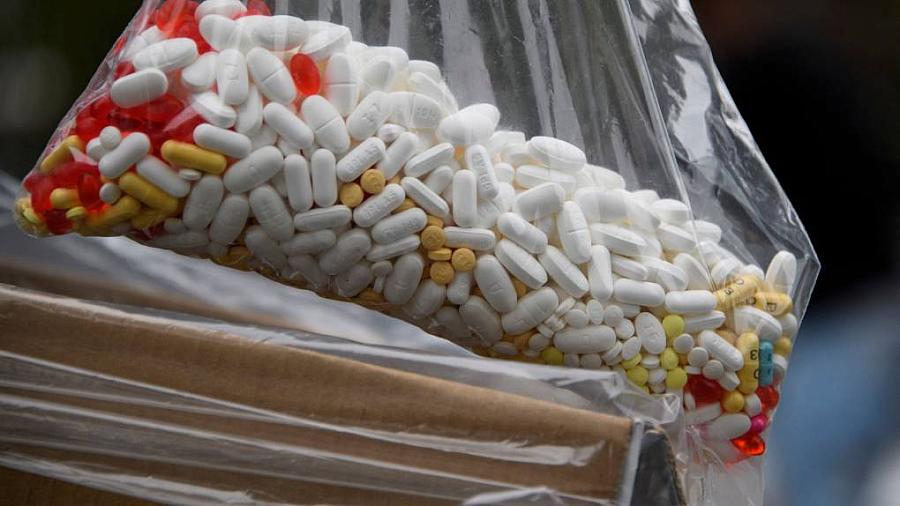It was heralded as a model of success. Then San Francisco’s drug overdose crisis exploded.

(Photo: Patrick T. Fallon/AFP via Getty Images)
In 2020, San Francisco saw the highest rate of opioid-related overdose deaths across California, according to data released by the state. Many of those deaths involved fentanyl, a synthetic opioid up to 100 times more powerful than morphine. Fentanyl is a significant factor in the alarming spike in overdoses in the West Coast, and the pandemic has also left people more isolated, putting people with addiction at greater risks of fatally overdosing. But fentanyl and COVID-19 do not tell the whole story of San Francisco’s overdose crisis, how it got so bad, or how health officials have responded to this epidemic.
That’s because in many ways the numbers are confounding. After all, San Francisco’s approach to responding to addiction has been considered a model for decades. The city has a long history of embracing medical approaches to addiction and spearheading solutions based on reducing harm rather than punishment. In 2003, the San Francisco health department began dispensing Narcan, a medication to reverse the effects of opioid overdoses. That was the first time any public agency in California moved in that direction. County officials have adopted programs to allow physicians to prescribe Suboxone, a medication that makes it easier to ease off opioids, in hospitals as well as for people released from jails. These efforts have been effective, and the region avoided the same devastation from the prescription drug crisis that the East Coast experienced. But now that’s all changed, and the people dying from drug overdoses are disproportionately African American.
My project for the 2021 Data Fellowship will look at why, what efforts are being made to reach marginalized communities, and what’s missing. How has funding for addressing addiction and preventing drug overdoses shifted in San Francisco over the last five years? Why are those dying of drug overdoses in San Francisco disproportionately African American, and when did that shift begin? And in what ways is San Francisco’s criminal justice system falling short when it comes to dealing with people with addiction?
Those are all questions I’ll dig into for this project. I’ll look at data from the San Francisco Medical Examiner’s Office, the District Attorney’s office, the San Francisco Public Health Department, and compare this data to other counties. I will use this data to try to answer questions around whether the city’s longstanding response to addiction should expand further, or go in a different direction.
Part one in this series will focus on funding, and I will chart changes in how San Francisco has funded overdose prevention programs over the last five years. Overdose mortality rates were higher among whites during the first overdose wave. But fentanyl arrived on the West Coast in a big way several years ago, and now there is increasing concern that overdose rates are rising among African Americans. As the rate of fentanyl overdose rose in San Francisco, did the city act fast enough to invest in a proactive response? How did its funding shift or approach change?
Part two will investigate why those dying of drug overdoses in San Francisco are disproportionately African American. I will use death records from the San Francisco Medical Examiner’s Office showing substances involved, age, gender, housing status, and the neighborhood where the individual lived and died over the last two years. I will use data from the California Department of Public Health to compare this data to other counties in the state.
Beyond looking at the demographics of who is dying, I will also need data to show whether San Francisco’s programs to reduce overdose deaths are reaching the marginalized communities they’re meant to serve. I will analyze demographic data on people receiving overdose prevention training in San Francisco, and the health outcomes of programs meant to make treatment more accessible, including an outreach team designed to bring buprenorphine to people living on the streets and another launched to provide overdose prevention training for residents in single room occupancy hotels.
Part three will reveal the percentage of people who overdosed and died in San Francisco in 2019, 2020, and 2021 who had previously been booked in a county jail within a year before dying. San Francisco jails were among the first to offer medication assisted treatment for addiction, and people housed there are also offered overdose education and naloxone when they’re released. But people leaving jails are also at high risk for opioid-related overdoses, and the pandemic has impacted the availability of programs when people are released. The Adult Probation Department has said their clients are waiting 49 days on average to get into a residential treatment bed. For part three, I will use data from county prosecutors, probation, and the sheriff’s office to analyze any shifts in the numbers of people receiving treatment while in custody or after release and to track what happens after people are prosecuted.
Part four will use data to examine whether there is truth behind the concern raised by some advocates that the recent spike in overdoses is related to a lax approach to prosecuting drug dealers. The San Francisco District Attorney has said he prosecutes felony drug cases 70% of the time, but I will look at data around recidivism rates and what that means in practice.

